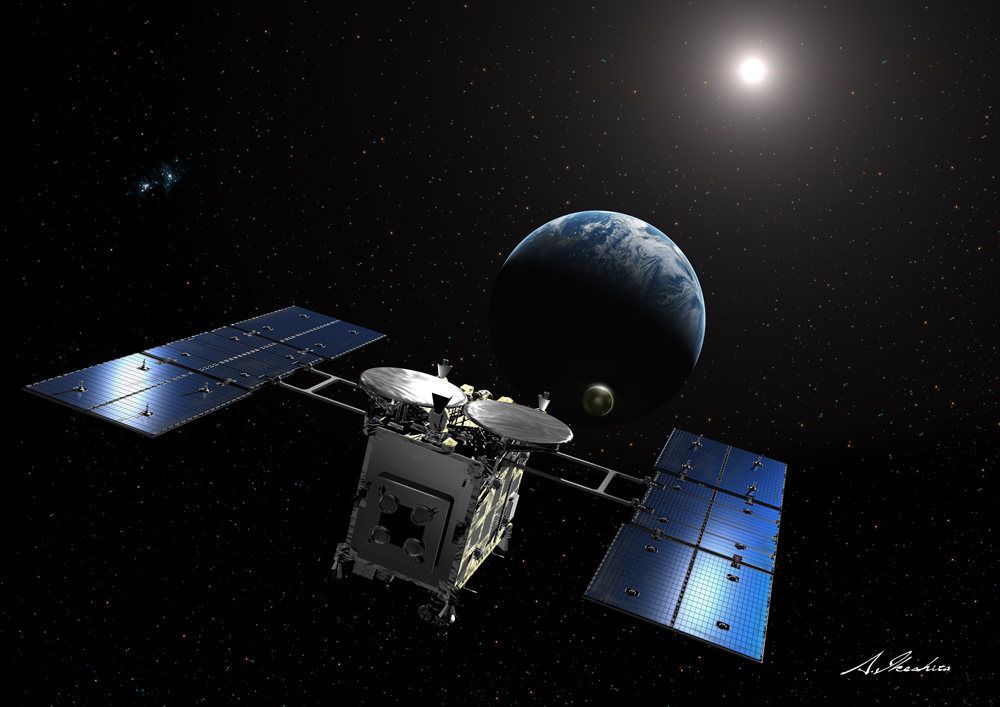
Three months into an interplanetary cruise expected to last three-and-a-half years, Japan’s $300 million Hayabusa 2 mission is in good health as it begins an ion-powered pursuit of an asteroid to return a piece of it to Earth.
The robotic spacecraft is already traveling more than 20 million miles from Earth after launching Dec. 3, and Japanese officials say the probe has passed health checks and is ready for the long-distance journey ahead.
The Hayabusa 2 spacecraft “completed its initial functional confirmation period on March 2, 2015, as all scheduled checkout and evaluation of acquired data were completed,” the Japan Aerospace Exploration Agency said in a statement. “The explorer has been under inspection for about three months after its launch on Dec. 3, 2014.”
The probe carries four ion thrusters to nudge it on course toward asteroid 1999 JU3, a carbon-rich world just 900 meters — about 3,000 feet — across with a tenuous gravity field 60,000 times weaker than Earth’s.
The engines produce little thrust, but the units can be operated for thousands of hours, building up energy to reshape Hayabusa 2’s path around the sun.
JAXA says two of the ion engines will fire for about 400 hours in March to give the spacecraft a boost. Two thrusters will be operated again in early June.
The two periods of near-continuous propulsion will change the probe’s velocity by about 60 meters per second, or 134 mph, to align Hayabusa 2 with an encounter with Earth in December. The close flyby of Earth will use the planet’s gravity to slingshot Hayabusa 2 toward its destination, where it is due to arrive in June 2018 after more firings of the craft’s ion engines.
Since Hayabusa 2’s launch in early December, ground controllers tested the probe’s X-band and Ka-band communications systems, batteries, science instruments, reaction wheels, and all four ion engines. Hayabusa 2 also extended its sampling device in preparation for scooping up material at the asteroid.

Engineers tested Hayabusa 2’s German-built lander named MASCOT built by the same team that managed the Philae comet lander, which was carried aboard Europe’s Rosetta spacecraft and touched down on comet 67P/Churyumov-Gerasimenko in November.
Three other landing craft built in Japan will also descend to the asteroid during Hayabusa 2’s mission.
The landers are mobile and will use mechanisms to hop across the asteroid to study its environment from several locations.
Hayabusa 2 will spend a year-and-a-half at asteroid 1999 JU3, enough time for the probe to pick up rock specimens from three different locations on the unexplored asteroid.
Once the mission’s work at the asteroid is complete, Hayabusa 2 will leave and head for Earth in December 2019.
Hayabusa 2 will release a container with the asteroid samples for a blazing re-entry through Earth’s atmosphere for a parachute-assisted landing in the Australian outback in December 2020.
Follow Stephen Clark on Twitter: @StephenClark1.



